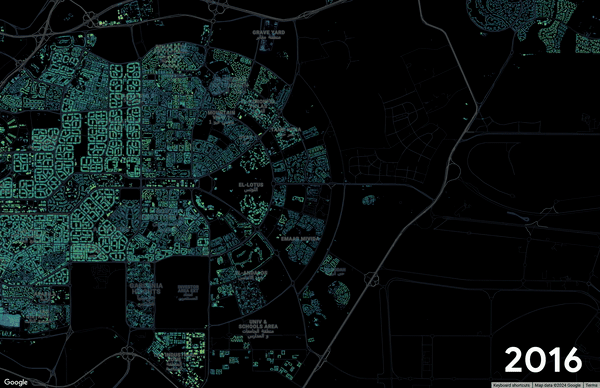Welcome to a new edition of ‘Last Week in Earth Observation’, containing a summary of major developments in EO from the last week and some exclusive analysis and insights from TerraWatch.
Four Curated Things
Major developments in EO from the past week
💰 Contractual Stuff: Funding, Contracts and Deals
Funding
- Weather risk analytics provider Reask has raised $6.5M in seed funding;
Contracts
- Radiofrequency monitoring data provider HawkEye 360, was awarded a data contract extension and a $2.5M contract for analytics services by the US National Geospatial-Intelligence Agency;
- The US Space Force awarded a contract worth $25M to Outside Analytics, a software data processing firm to integrate data from missile-warning satellites;
M&A
- Investment firm KKR has completed the acquisition of IQGeo, a geospatial service provider for the telecom and utility sectors, for £333M.
📈 Strategic Stuff: Partnerships and Announcements
Partnerships
- Indian EO firm SatSure announced a partnership with Rajasthan Forest Department, Japan International Cooperation Agency and Boston Consulting Group to develop a proof-of-concept of a forest health monitoring for the state;
Announcements
- IBM and NASA released its geospatial AI foundation model applicable for variety of weather and climate use cases, as an open-source model via AI platform Hugging Face;
- BlackSky announced that its next generation satellites will be equipped with military-compatible laser terminals to improve data downlink speeds;
- Amini, which is developing an Africa-focused geospatial data and processing platform, has announced the launch of its product Amini Lite;
- Planet announced the launch of its Forest Carbon Monitoring product, which provides quarterly, 3-meter resolution measurements of forests globally as well as released first images from its Tanager-1 satellite with hyperspectral sensor.

🗞️ Interesting Stuff: More News
- The US military is proceeding slowly to replace its aging military weather system, reflecting the challenges in the commercial weather data market;
- To learn more about the market for weather from space, check out the TerraWatch deep dive.
- Japan launched its classified IGS-Radar 8 satellite used for intelligence purposes and environmental and natural disaster monitoring;
- Maxar opened its international headquarters in London, which will serve as the central hub for its international government business;
- China launched eight EO satellites including prototypes for future constellations and updates to existing ones;
- Thermal infrared data provider Hydrosat is expanding its operation in Latin America with partnerships with local resellers and service providers;
🔗 Click-Worthy Stuff: Check These Out
- This article that discusses the development of an AI-powered multiscale, multimodal, multisensor climate model for monitoring climate change;
- This paper that proposes a multispectral data fusion technique leveraging a geostationary imaging and weather satellite for detecting convective clouds, which can improve detection of localised thunderstorms;
- This article from ECMWF, that explains how go run your own weather models using open weather data (yes, this is now possible!);
- This dataset from Google that tracks building changes across the Global South from 2016 to 2023.

One Big Announcement
EO Summit 2025: June 10 - 11 | New York City
After the overwhelming success and positive response to EO Summit 2024, we are back with EO Summit 2025 - bigger and better.

Why an EO Summit?
I know we already have far too many events, conferences and workshops in the world, especially in geospatial and EO. But, after more a year of research, my conclusion was there was no conference, for the users of EO i.e., enterprises across insurance, finance, agriculture, forestry, energy, mining, climate, sustainability etc., governmental users and non-profits.
I could not find a conference that focuses on satellite data and its applications, that an existing/potential commercial user of EO can go to, either to learn about the technology and market trends in the EO sector (or) to meet other users within their markets to learn about how they use and integrate satellite data within their organisations and compare notes.
Even more importantly, as the EO sector hopes to break into the commercial market and gain adoption among the end-users, there is no conference that EO professionals can attend to discover the use cases of EO, understand the significance of EO for end-user organisations and use those insights as they grow their business.
What is EO Summit?
A conference to bring the global EO industry and users of EO together (along with investors and policymakers), to discuss enterprise, civilian and climate-related applications, with two fundamental principles at its core:
To be user-centric, not provider-centric and to be application-focused, not technology-focused.
To give more context on EO users, there will be two categories of them: intermediate users and end users. This is a function of how the market is evolving and how EO is being adopted across the different industry tracks.
- Intermediate users are part of the Insights and Applications segments of the TerraWatch EO Value Chain. While they are not the end users, the solutions that they develop using EO are what end users consume and hence, their inputs are significant for the growth of the EO sector.
- End users are the stakeholders that are the last-mile consumers of EO. In many market verticals represented as part of the industry tracks, most end-user organisations do not care where the data comes from and are agnostic to the technology used to get the job done. This is why the role and the presence of intermediate users become crucial.
Why NYC?
Simply put, this is where many of the EO user organisations - across finance, insurance, climate, sustainability, agriculture, energy etc., are based. It is also only a train ride away from several nearby cities and is well connected with the rest of the world.
As I mentioned, EO Summit is aimed at current and potential users of EO. Yes, there are several geospatial/EO hubs in the world, but EO Summit does not want to be simply an event for EO professionals - it is an event that aims to connect the EO professionals with the users. This is why we organised the first edition in London, and we want to do it in a similar business hub, NYC.
Does this mean we are leaving London and Europe for good? No, we will be back in London next year - we will alternate between London and NYC, while also organising other conferences elsewhere (Middle East, Asia-Pacific etc.) in the coming years.
EO Summit: Business Model
So, let’s get to business. How am I doing this? Let’s remember: TerraWatch is not an event management company, we are not financially supported by any government or space agency, and the founder of TerraWatch is not a millionaire.
EO Summit is a community-supported event. I am organising this conference with the hope that I will be able to get back all the money that will be invested, and if we do manage to raise profits, we will invest this back into the other events. So, yes, the business model is typical of any event - Sponsorships and Registrations.
Cool! I am interested, what next?
Which of these categories do you belong to?
- Sponsor: If you want to gain brand visibility and promote your products and services to the user community, then you can check out our sponsorship brochure - we have limited slots, so, please hurry up and get in touch!
- Speaker: If you are a user of EO, we will be putting out calls for speakers in November to have you come and present your use case. Stay tuned!
- Attendee: If you would like to register for the event and take advantage of our early bird prices, stay tuned for the ticket sale announcement later in October - there will not be many tickets, so it will be first-come, first served.
Scene from Space
One visual leveraging EO
Flooding in Central Europe
Mid-September saw a low-pressure storm system batter parts of Austria, Poland, Slovakia, and the Czech Republic with torrential rainfall, causing heavy flooding across the countries. Across Austria and the Czech Republic, the impacts were high as they saw up to three times the amount of rainfall typical for the entire month of September, in just one week.
The following images from NASA's Landsat mission show the Oder River bursting through its banks and flooding cities such as Wroclaw and Opole in Poland.


Until next time,
Aravind.






